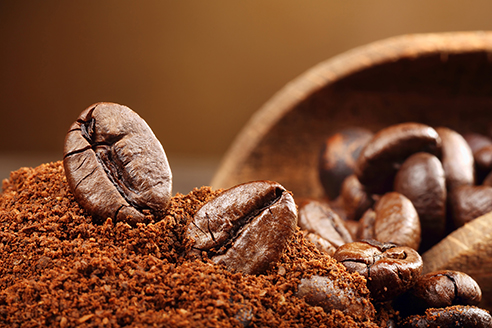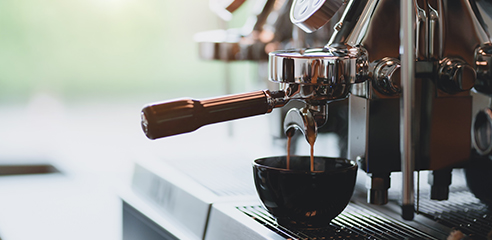Start with Good Beans!
The majority of American adults (63%) drink coffee every day, and the average coffee drinker in the U.S. drinks 2.7 cups per day. That’s a lot of coffee, so make sure you get the best experience you can! Whether brewing coffee at home or getting it in a café or elsewhere, the guide below can greatly enhance your coffee-drinking pleasure.
Good coffee starts with good coffee beans. But even among high quality beans there are differences that affect the flavor profile. Some of the factors that our roasters take into account when selecting beans, and that we take into account when selecting our roasts, include:
TYPE OF BEAN
The two primary species of coffea plants used for the coffee we drink are Arabica and Robusta. Arabica is known for its more aromatic and delicate flavors. It’s also less resistant to disease and pests. Robusta is known for being more bitter, caffeinated, and hardy. Within every species, there are multiple varieties with their own distinctive characteristics.
DENSITY OF BEANS
Bean hardness, or density, gives us information about the coffee’s quality and how we should roast it. Harder beans developed more slowly, creating more complex flavors. They can also be roasted more quickly and at higher temperatures.
GROWING ELEVATION
Generally speaking (but not always), the higher the elevation where coffee is grown, the denser the beans and the better the quality.
PROCESSING METHOD
Coffee processing is the method by which the coffee beans are removed from the coffee cherry (see Coffee Basics for more detail!). The method used affects the coffee’s flavor and the optimal way to roast it.WET/WASHED: The cherry flesh was removed by water, and then the beans were dried. This offers a clean flavor profile.
DRY/NATURAL: The coffee was slowly dried under the sun while still in the cherry. This method usually creates a sweet, fruity taste. The quality varies more with this method: it can result in poor quality if fermentation is uncontrolled or inconsistent or in high quality with careful drying and monitoring by the producer.
COUNTY OF ORIGIN
Each region of the world produces coffee with its own unique taste profile. Conditions such as altitude, climate, soil, and processing methods all affect the taste of the coffee. Differences in coffee based on region include the amount of body, the amount of acidity, and the sweetness level. Knowing the country of origin helps ensure that the bean meets the desired taste profile.
This can be narrowed further by selecting single origin coffee, which comes from a particular region within a country (or sometimes even a particular farm), or a micro lot, which comes from a particular area of a particular farm.
An alternative is to create a blend, in which coffees from multiple origins have been combined to achieve a more desirable flavor profile or to add any characteristics that were considered “missing.” Blends can be made either before or after roasting.
Experimenting and attending our cuppings (tastings) is a great way to figure out what you like and don’t like. Don’t be surprised that you like one style or flavor profile for mornings or with meals and a different style for a different time of day. This process can be super fun too!

When green coffee beans are roasted, thousands of chemical reactions take place, altering the beans rapidly and significantly. The sugars caramelize, the aromas are unlocked, and the flavor develops. However, immediately after roasting, carbon dioxide trapped within the coffee begins to seep out. As the gas forces its way to the surface of the bean, it pushes some of the natural coffee oils with it. As a result:
The aromatic coffee oils begin to evaporate now that they are closer to the surface of the beans, which means that the aromas will start to dissipate.
The empty space that once contained the carbon dioxide is now free for oxygen to invade, causing the beans to decay more quickly.
All of our beans are freshly roasted in small batches locally. It makes a world of difference in the flavor. We also grind the beans immediately before making your drink for the best possible flavor experience.
When buying coffee, it is important to check the date on the bag. Just because, from an FDA standpoint, the coffee might be good for a year or more doesn’t mean it is actually “good.” Unfortunately, the vast majority of coffee purchased in stores is stale. It isn’t going to taste terrible, but quality diminishes significantly with time and it simply won’t have the flavor that a freshly roasted and ground coffee will have. Once roasted, coffee is highly perishable. Even in whole bean form, the quality begins to decline after two weeks, and when ground the quality declines after the first day. Just like a stale potato chip, the difference between fresh and stale coffee is unbelievable.
Use Good Equipment
GRINDER

There are five factors that have the most influence on how the coffee tastes: water temperature, pressure, extraction period (how long the coffee is exposed to the water), coarseness of the grind, and consistency of the grind. Two of these five factors are a direct result of the grind, so you can see that when it comes to making the perfect coffee, the grind plays a starring role! Using a high quality coffee grinder helps ensure that the coffee is consistently ground to the right level for the brew type. A good grinder prevents the ground coffee from clumping together, keeps the beans cool while grinding, and helps distribute coffee evenly in the basket.
BREWER
The coffee brewer or espresso machine is responsible for the other three factors that affect quality. It is critical that the equipment used provides consistent and stable performance to ensure the right temperature, pressure, and water flow and to provide that perfect extraction. Our espresso machine conducts a self-diagnostic evaluation after every shot pulled to ensure all factors are properly dialed in for the ultimate taste.
Use Good Water

Coffee drinks are mostly water! This means that the quality of the water used plays a significant role in the taste of the coffee. The minerals, water treatment chemicals (like chlorine), and pH in water impact the coffee extraction process and the flavor. We have installed specialized water filtration systems to provide the right characteristics in our water to brew the perfect cup of coffee.



0 Σχόλια